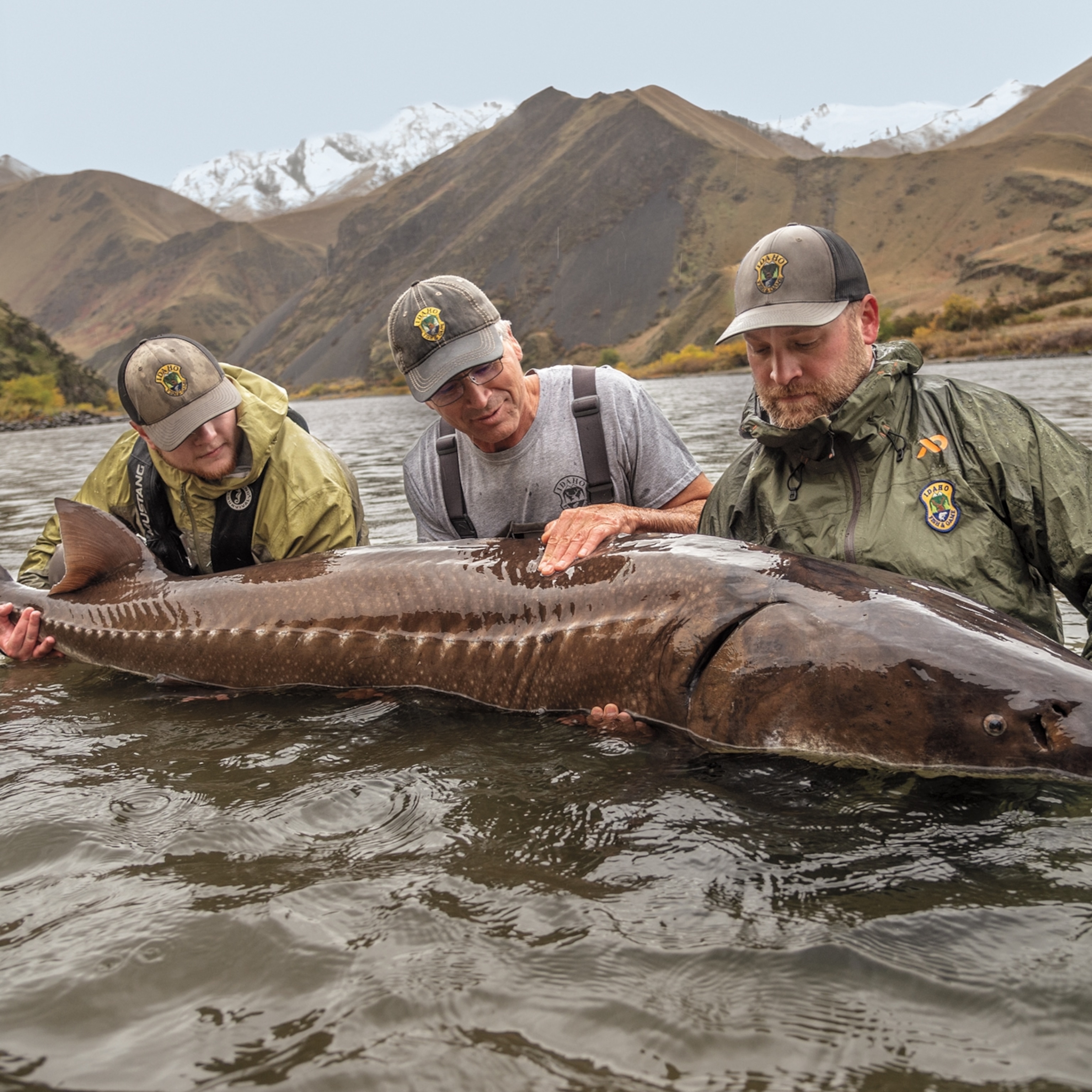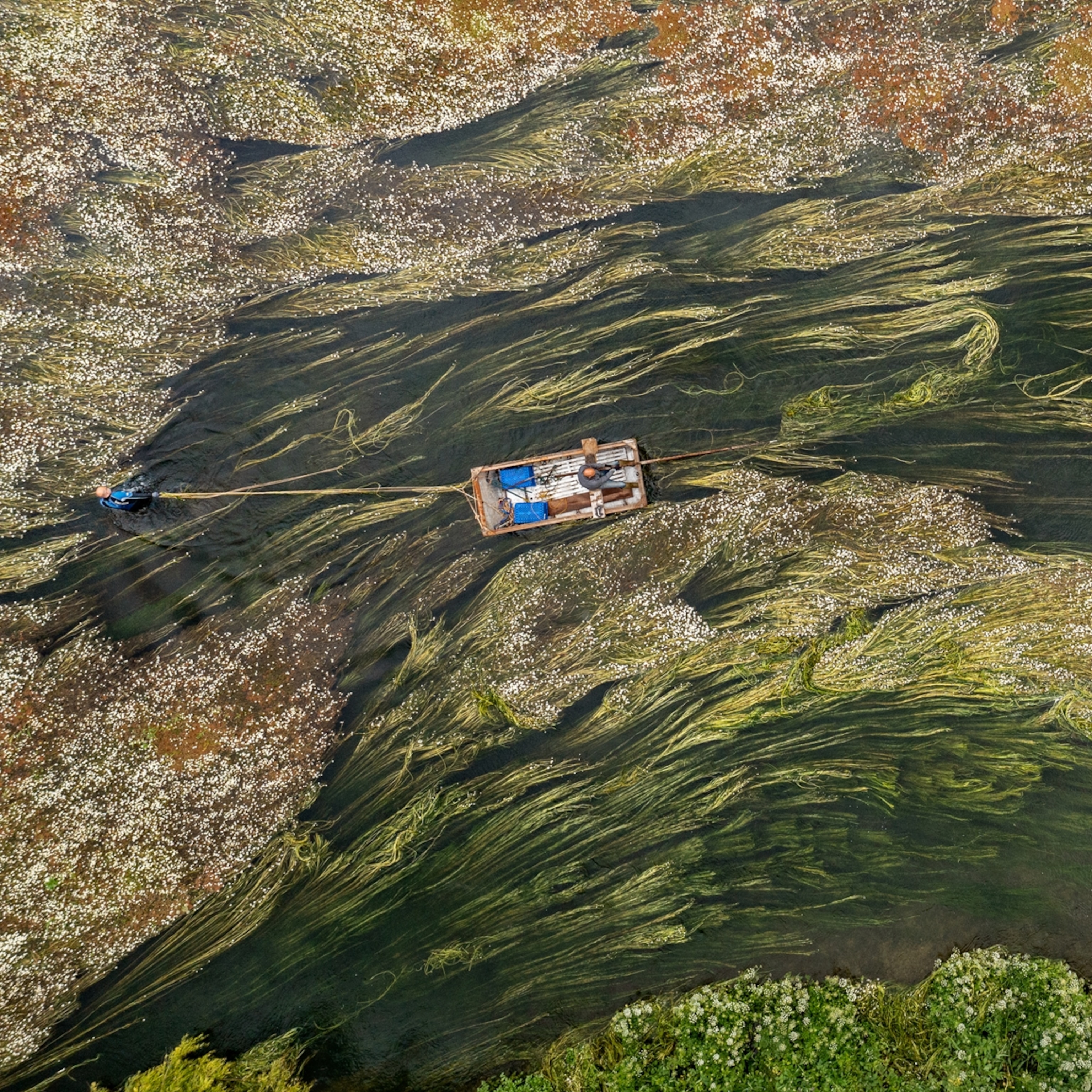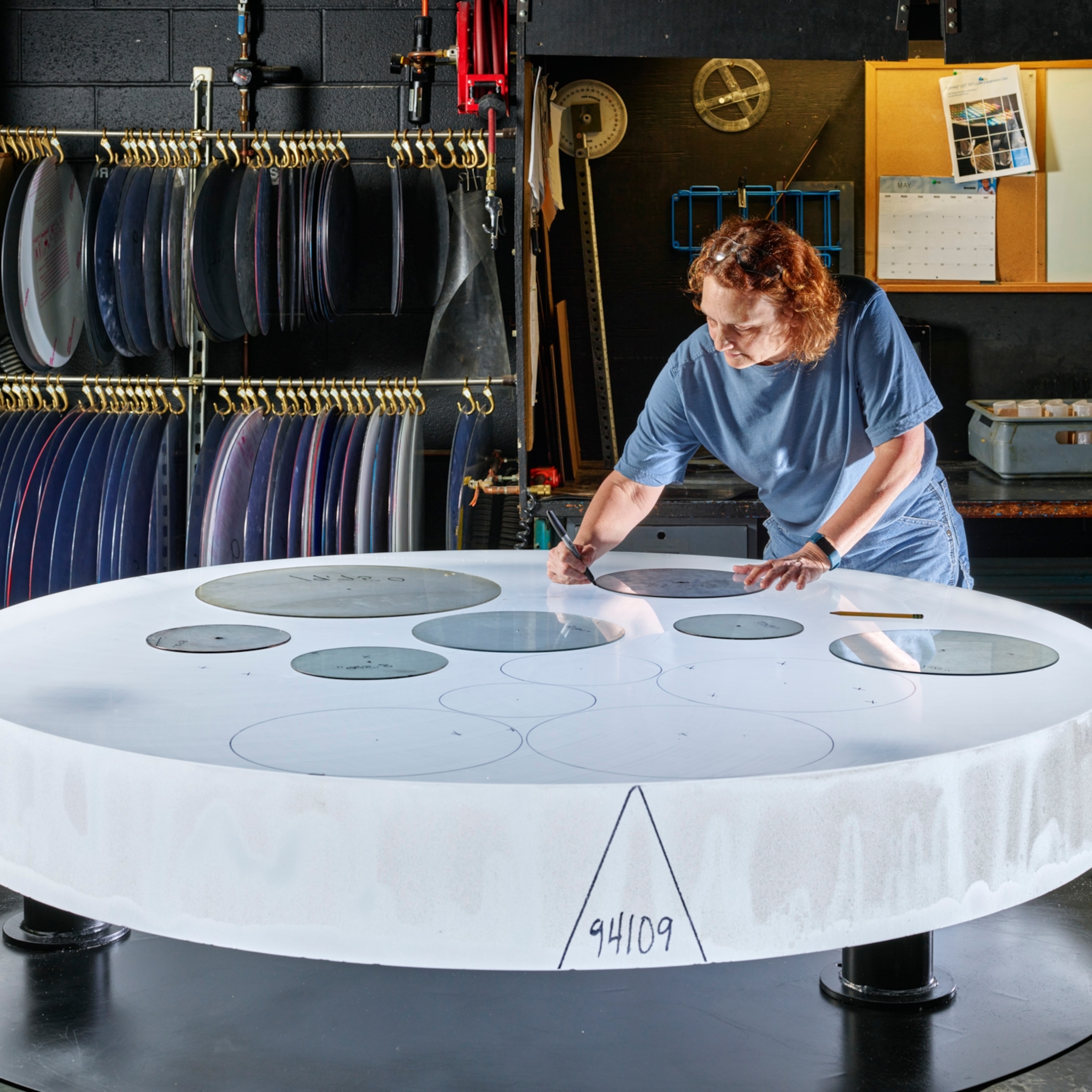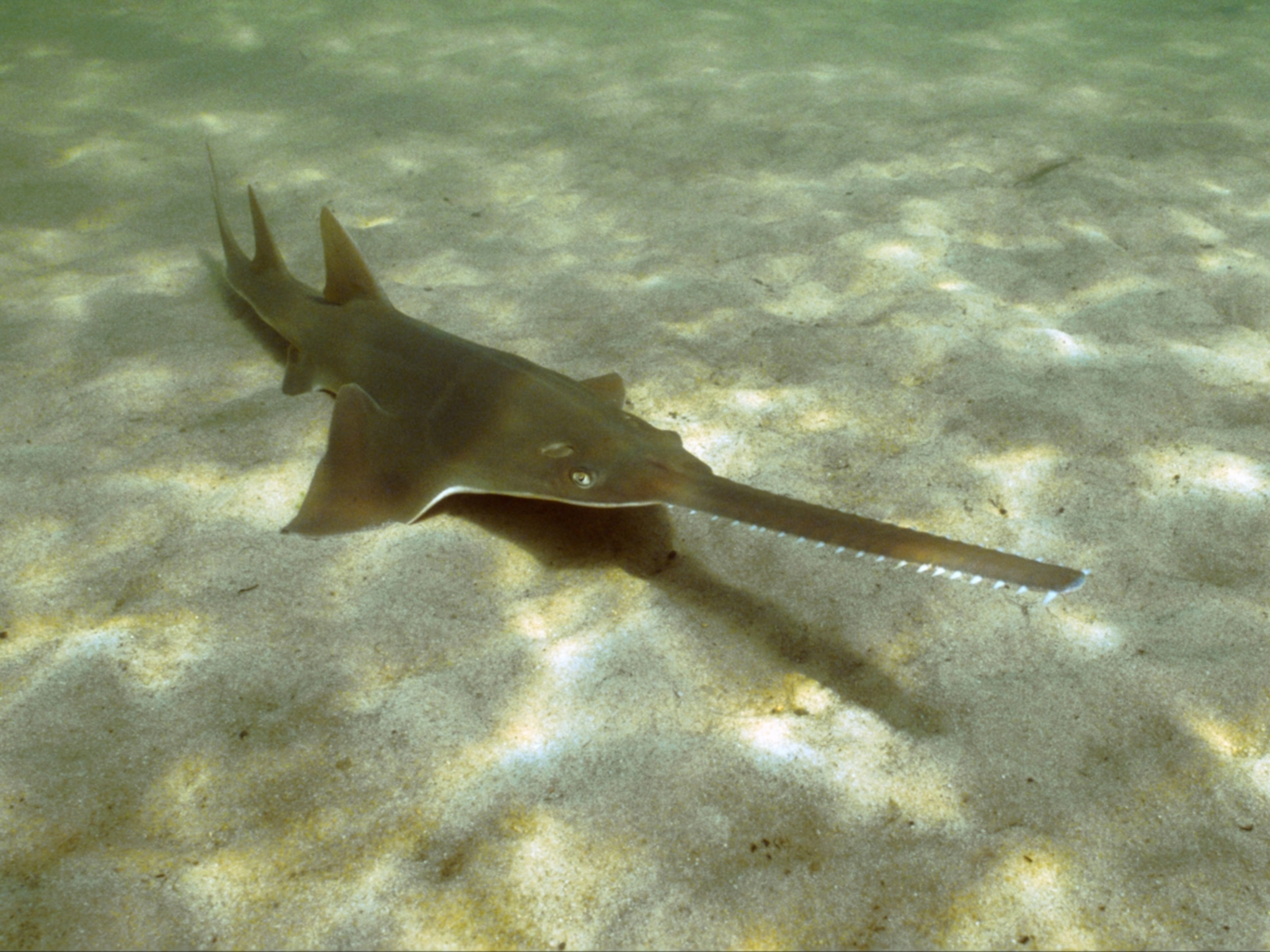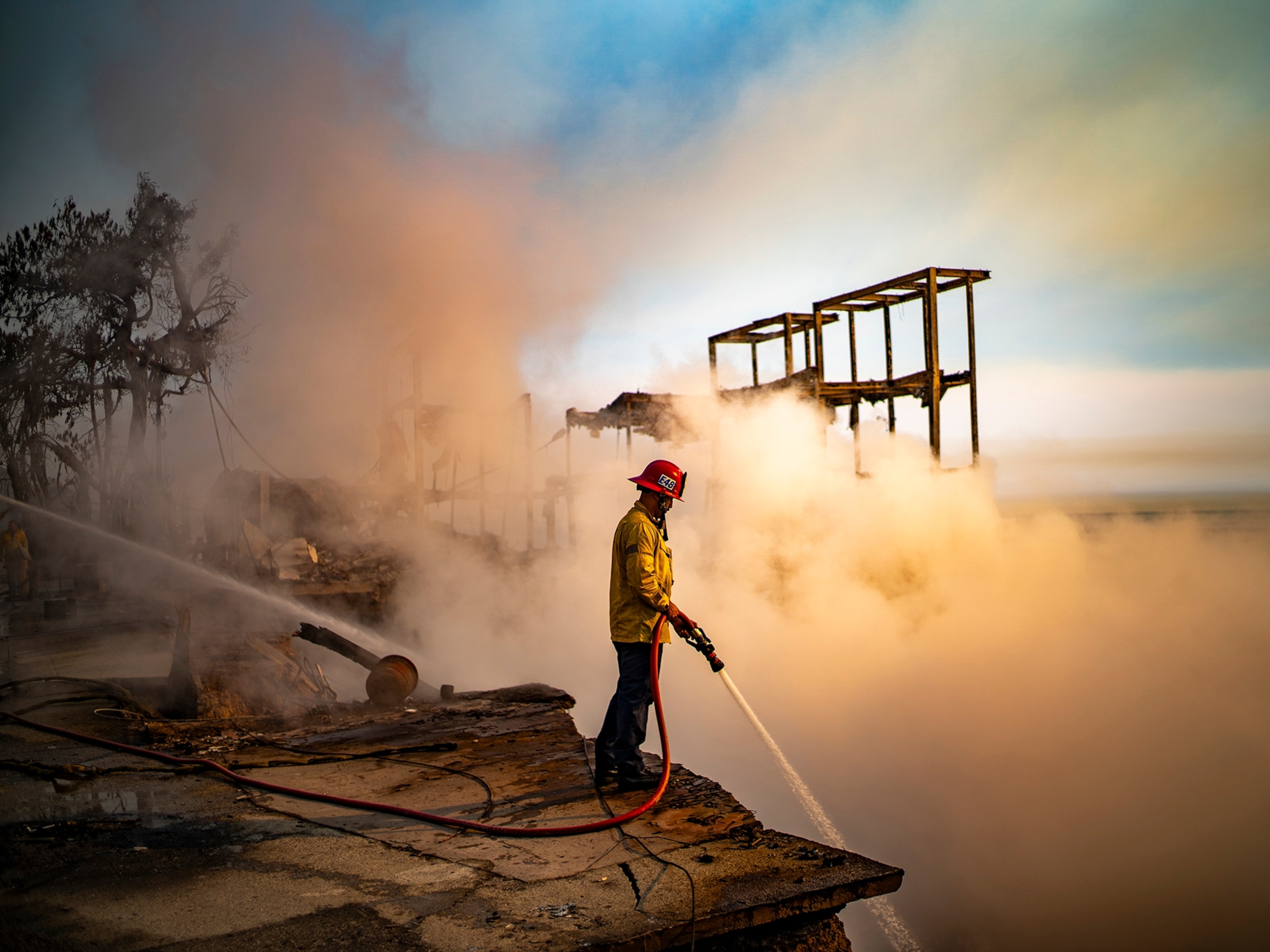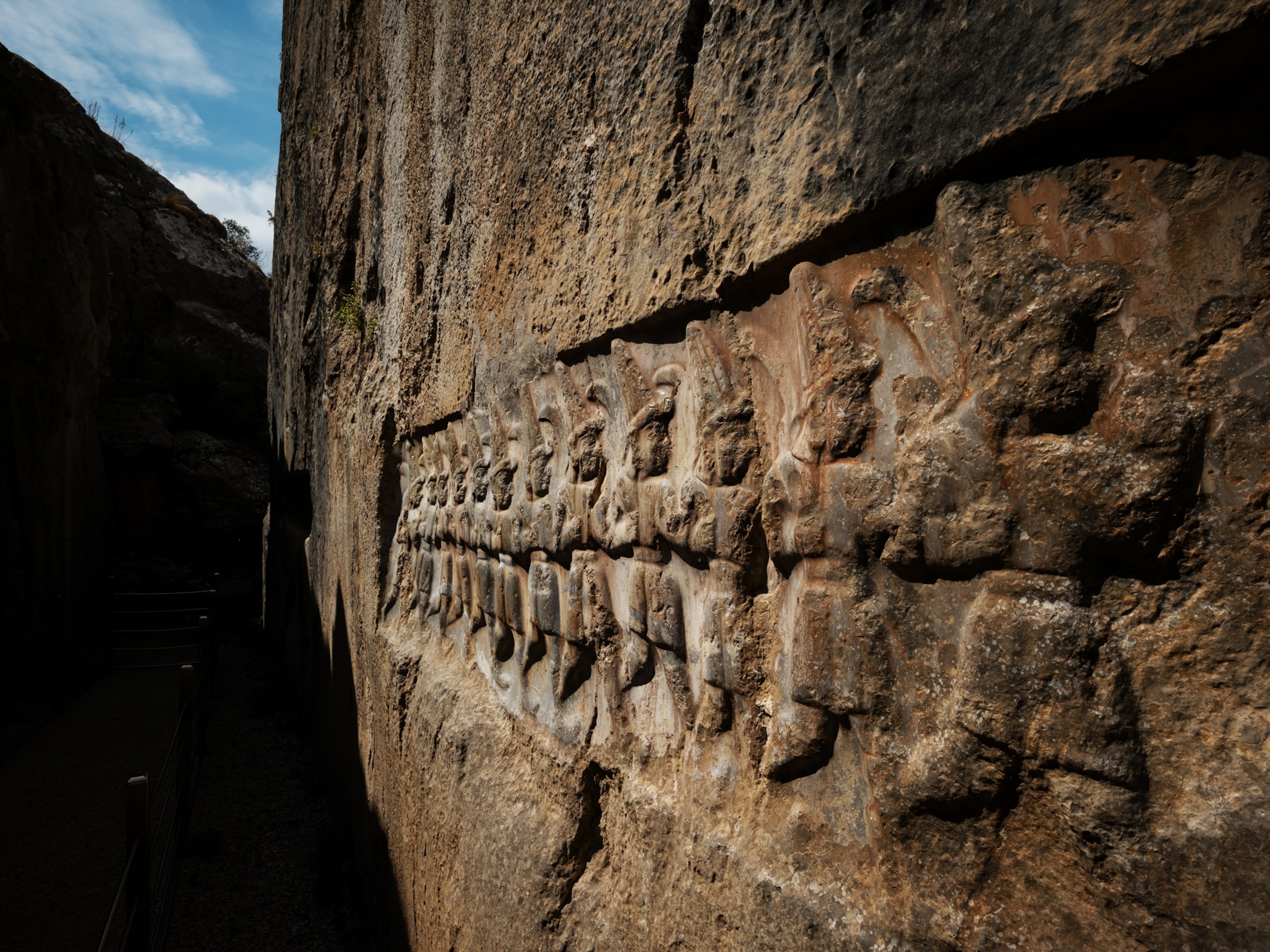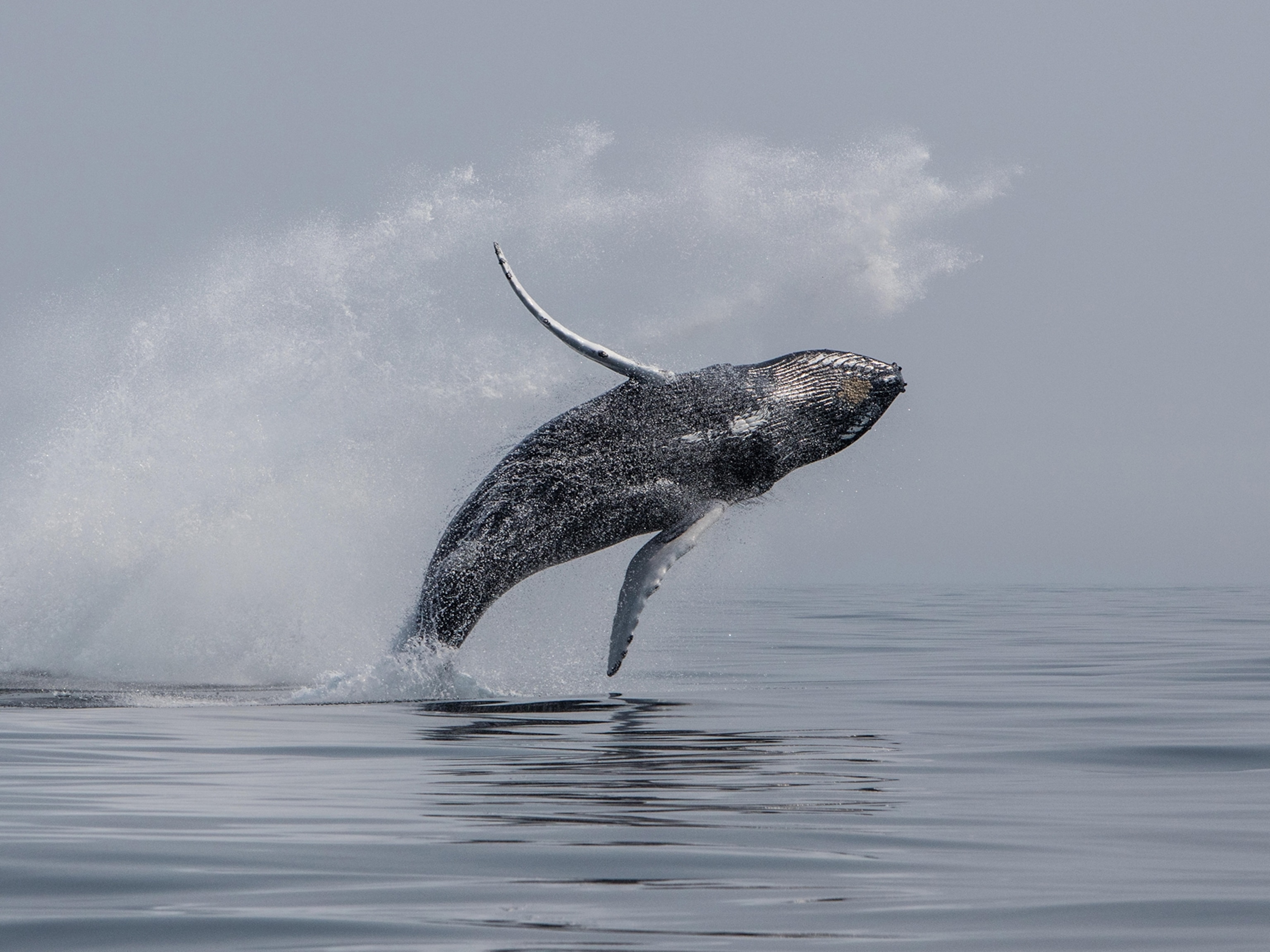
This photographer found peace while fly-fishing Kenya's lush highland rivers
Pete Muller was searching for a way to heal after years of working in some of Africa's most conflicted environments. He found it at the Mathioya River.
It’s last light in the valley, and the sound of rushing water drowns out all others. I walk the river’s edge with my dog, Mosi, whose inability to hear over the cascade makes him nervous. Despite his impressive size, he trots sheepishly at my heels. Ostensibly we walk to fish, but really we move at the urging of naturalists long since passed—of John Burroughs and John Muir, of Loren Eiseley—and of my parents, Norman and Paula, who are alive today but live far from this Kenyan vale. Walk in the woods, their voices advise, along the banks of a river where, in the blue end of a day, you may find the rhythms that elude you. There, among the fish and the flowers and the forces that bind them, you might make peace with your worried mind.
I began to venture into the highlands of central Kenya in 2013 with the hope that its rivers might exert their transformative power upon me, smoothing my edges as they have, over time, polished the stones in their path. I’ve never been free of emotional distress, but my years of working as a photojournalist in some of Africa’s most conflict-ridden environments left additional barbs in me. With time it became hard to differentiate between the conflicts that raged within and the ones I witnessed through my lens. Gradually they became intertwined, and I felt an expanding sense of tension and discomfort in my core.
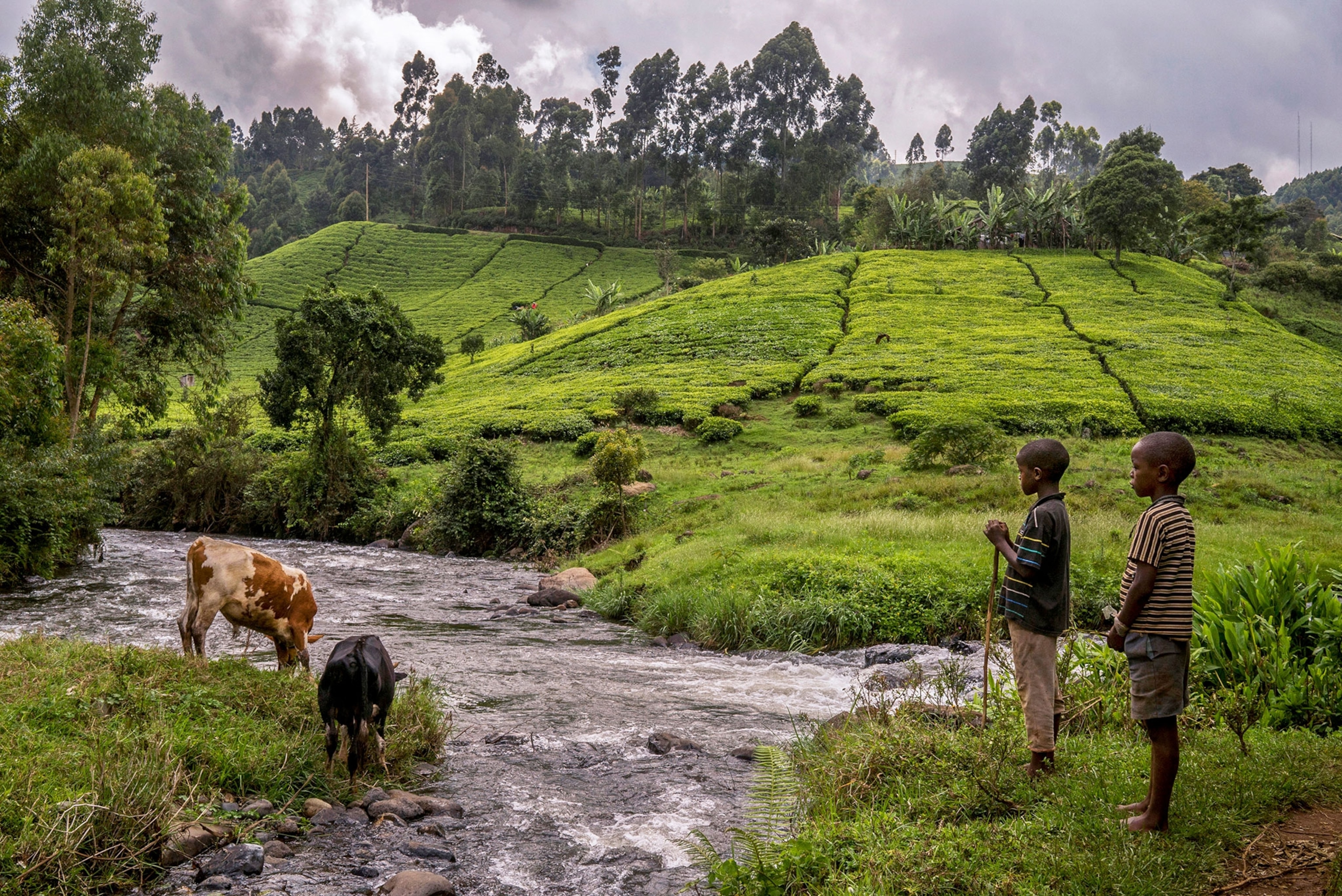
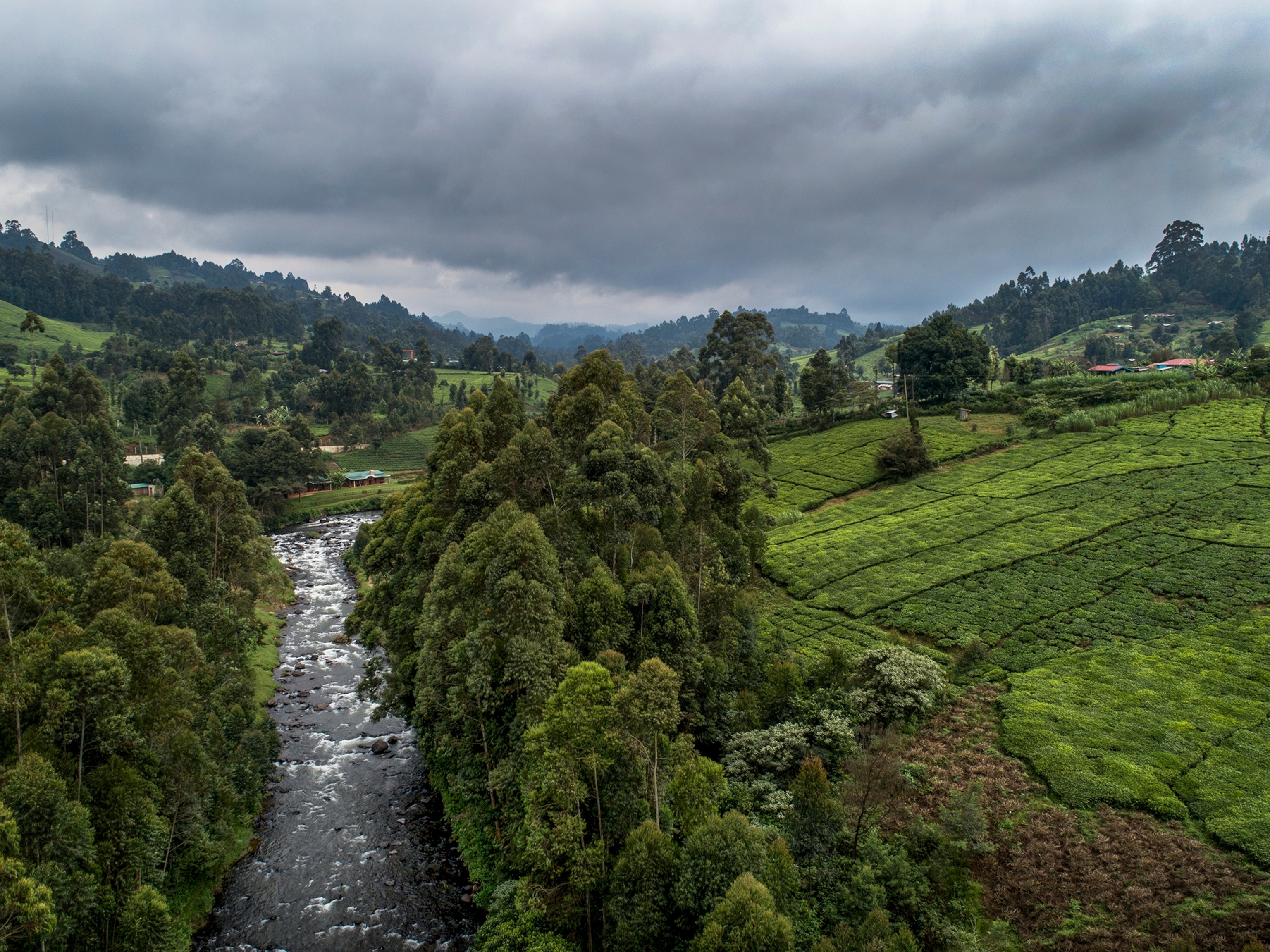
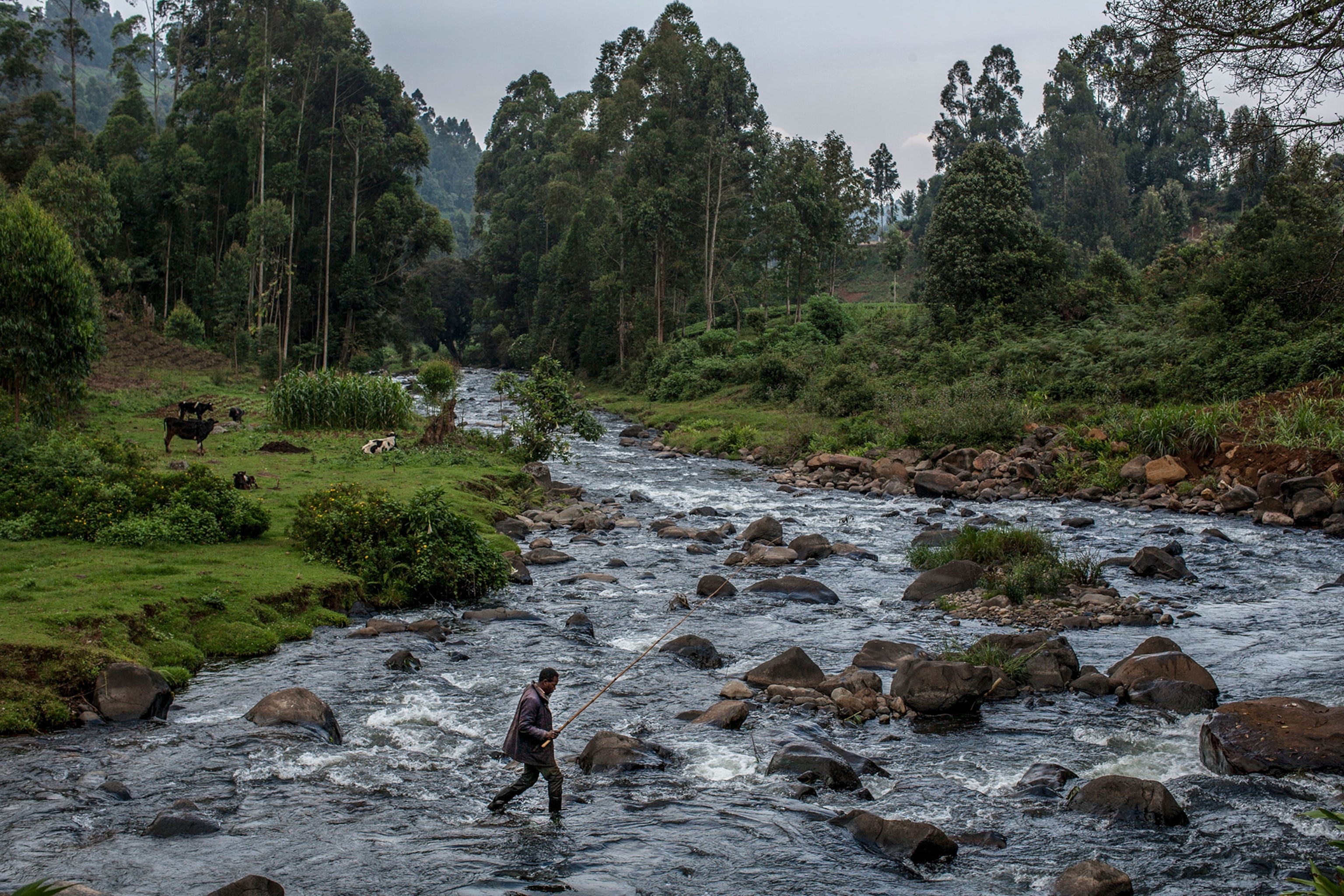
Fly-fishing, with its knot-tying, wading, and rhythmic casting, seemed an antidote to the pain of photographing suffering, as I’d done so often in recent years. I hadn’t cast a fishing line since the age of 10 or so, when I used bait and lures to fish the Atlantic waters that surrounded the places I lived as a child, first along the coast of New Jersey and later in Massachusetts. My mother’s boyfriend at the time taught me the basics. He was a large, avuncular man who’d been an interrogator in the U.S. Army Special Forces, an experience that left him with his own scars. As he affixed lures to his line, he explained that he could handle little more than fishing and taking photographs, the latter his chosen profession after leaving the military. At dusk along the jetties, his hand resting comfortably on the rod, he seemed at ease.
Between assignments I began to drive from the chaos of Nairobi, where I lived, to the fertile, undulating hills that surround central Kenya’s Ragati and Mathioya waterways. The slow-flowing Ragati River drifts through protected indigenous forest, where a network of paths, used by humans, leopards, elephants, and buffalo, cuts through lush vegetation. The Mathioya rushes through the heartland of Kenyan tea production, near the slopes of the Aberdare Mountains and the receding glacial peaks of Mount Kenya. Both rivers are home to populations of furtive brown and rainbow trout maintained through the stocking programs of the few nearby fishing clubs and lodges.
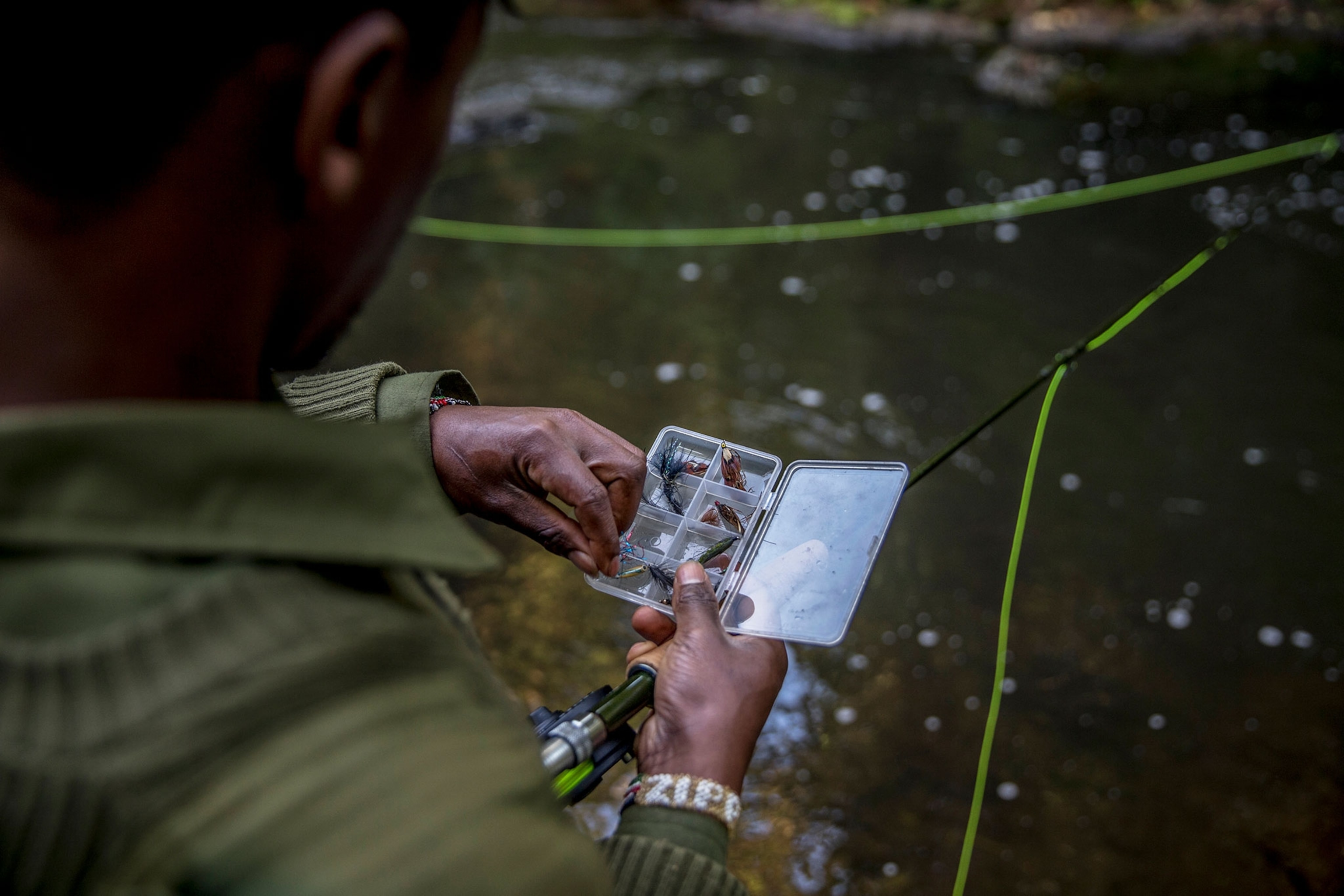

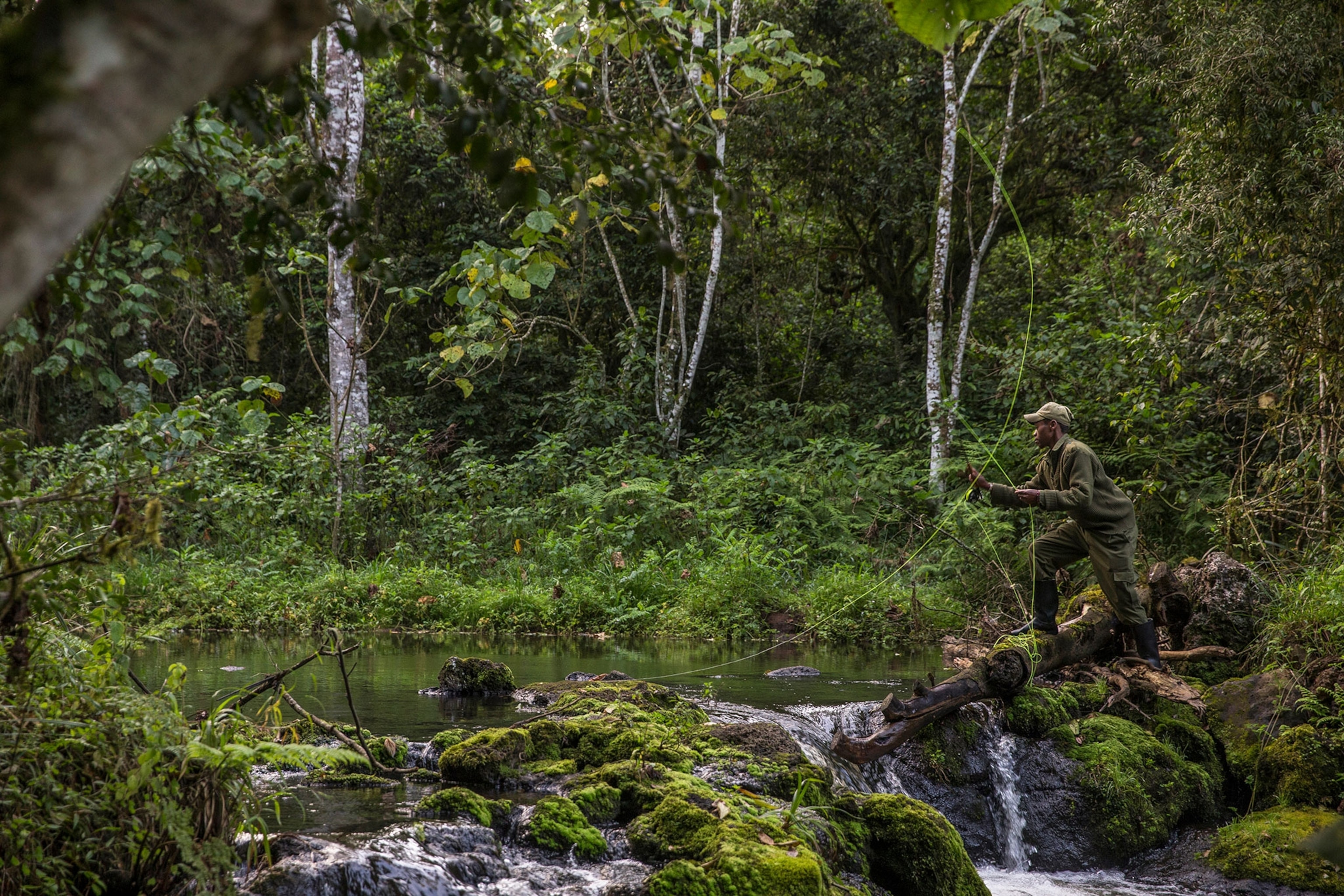
I frequented a simple cottage on the bank of the Mathioya where the sounds of the river are always present. There I followed John Ngaii Moses, a nimble man who, at the age of 57, moved across wet stones with the grace and confidence of someone younger. John’s life began when the valley’s beauty was tainted by conflict and injustice. He was born in 1961 above the river in the village of Kiamuturi, where his mother was confined when British colonists seeking to suppress an armed independence movement detained around a million Kenyans. His story reminds me that violence and cruelty can be inflicted in the most serene of places.

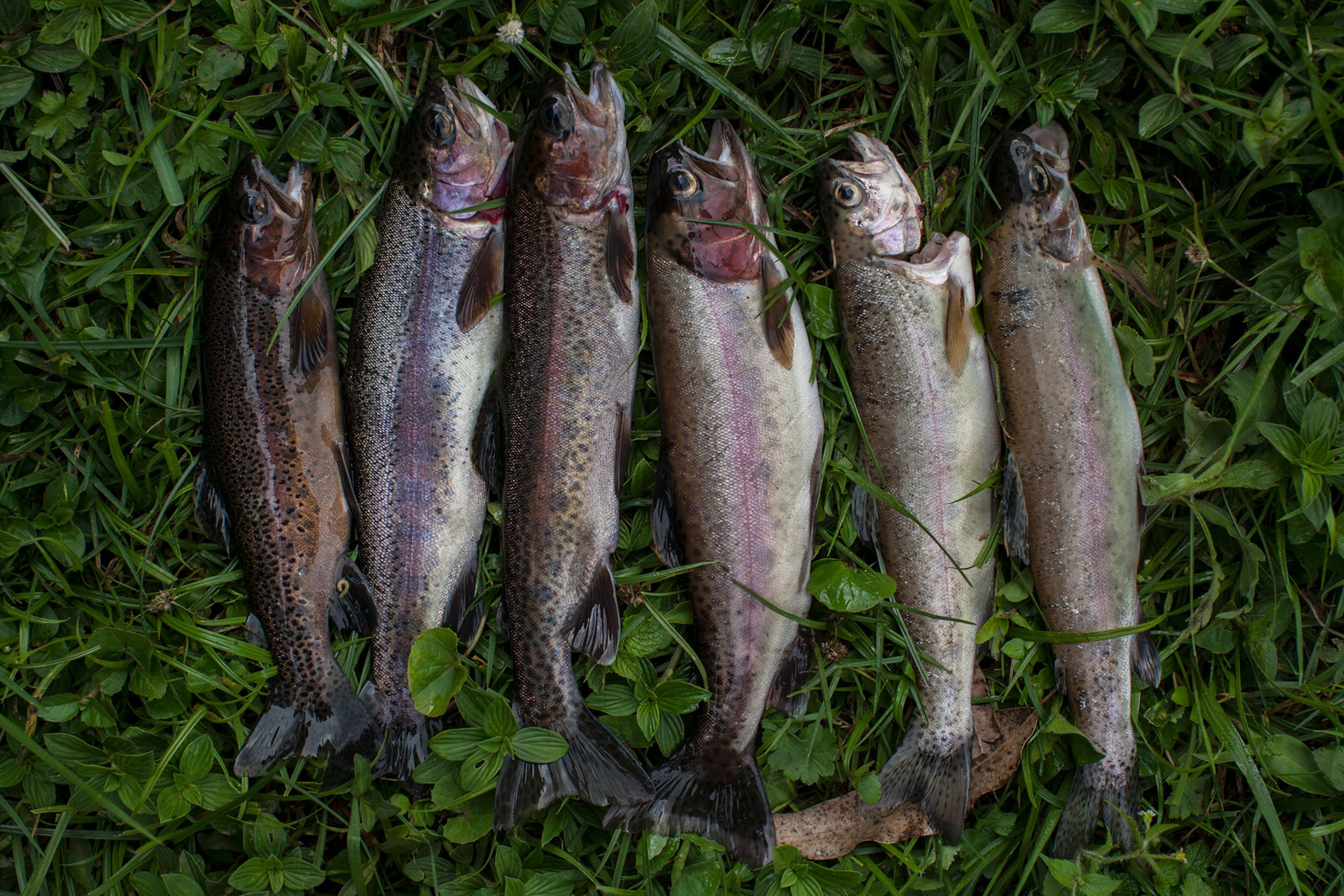
Near the village, John pointed to calm pools where fish linger and feed. I waded in, moving cautiously amid the rocks and swift currents, and cast my line. On my first visits I knew nothing of the principles of fly-fishing: about the presentation of the fly, about keeping the line taut while allowing it to float freely enough that fish mistake the artificial fly for a real one caught in the current. I believed, as most do, that the difficulty of fly-fishing lay in its famous back-and-forth casting. In fact, fly-fishing is a complex study of both technique and ecology, requiring knowledge of the rhythms of the river and how fish feed in order to effectively trick fish in one of their most basic skills.
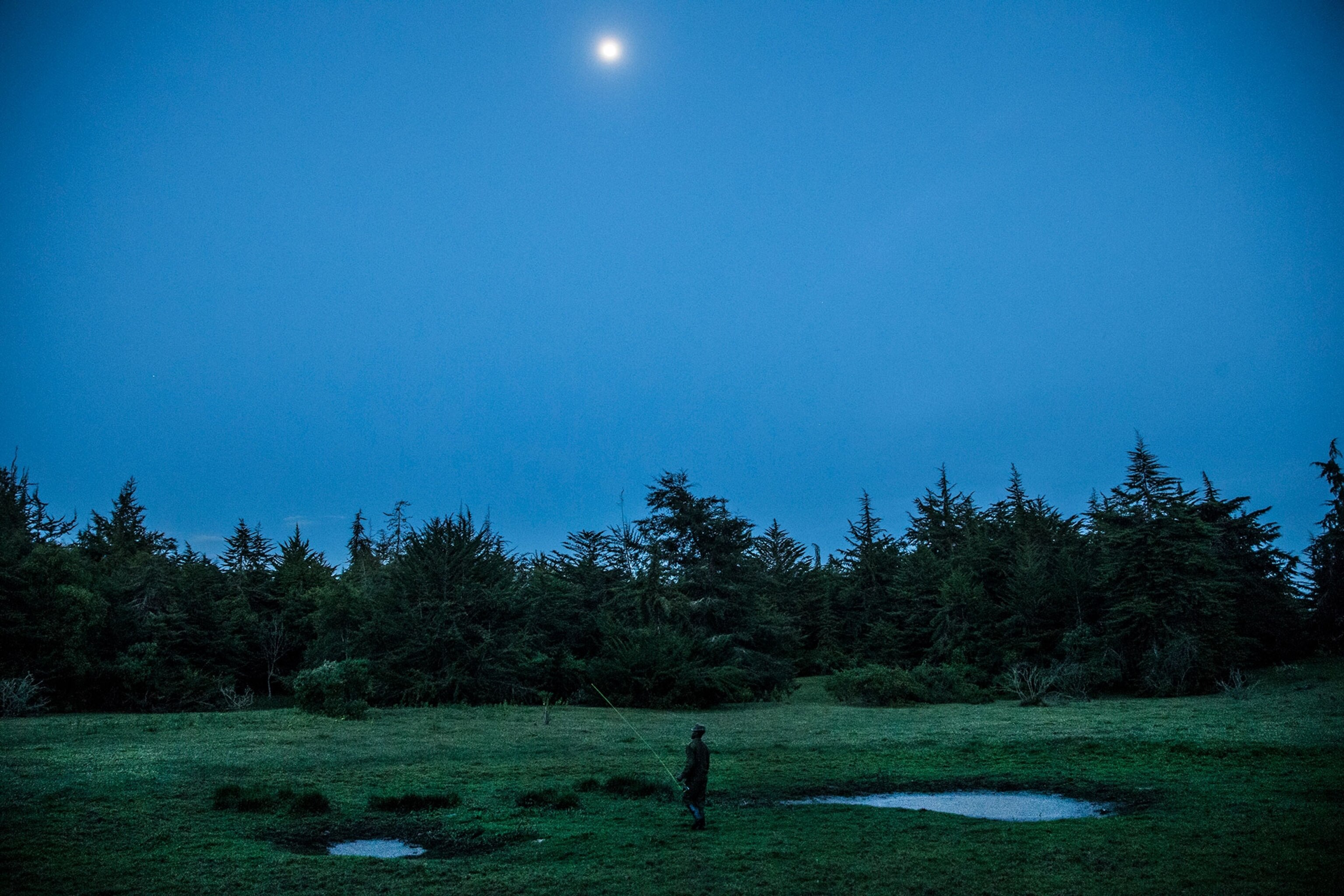
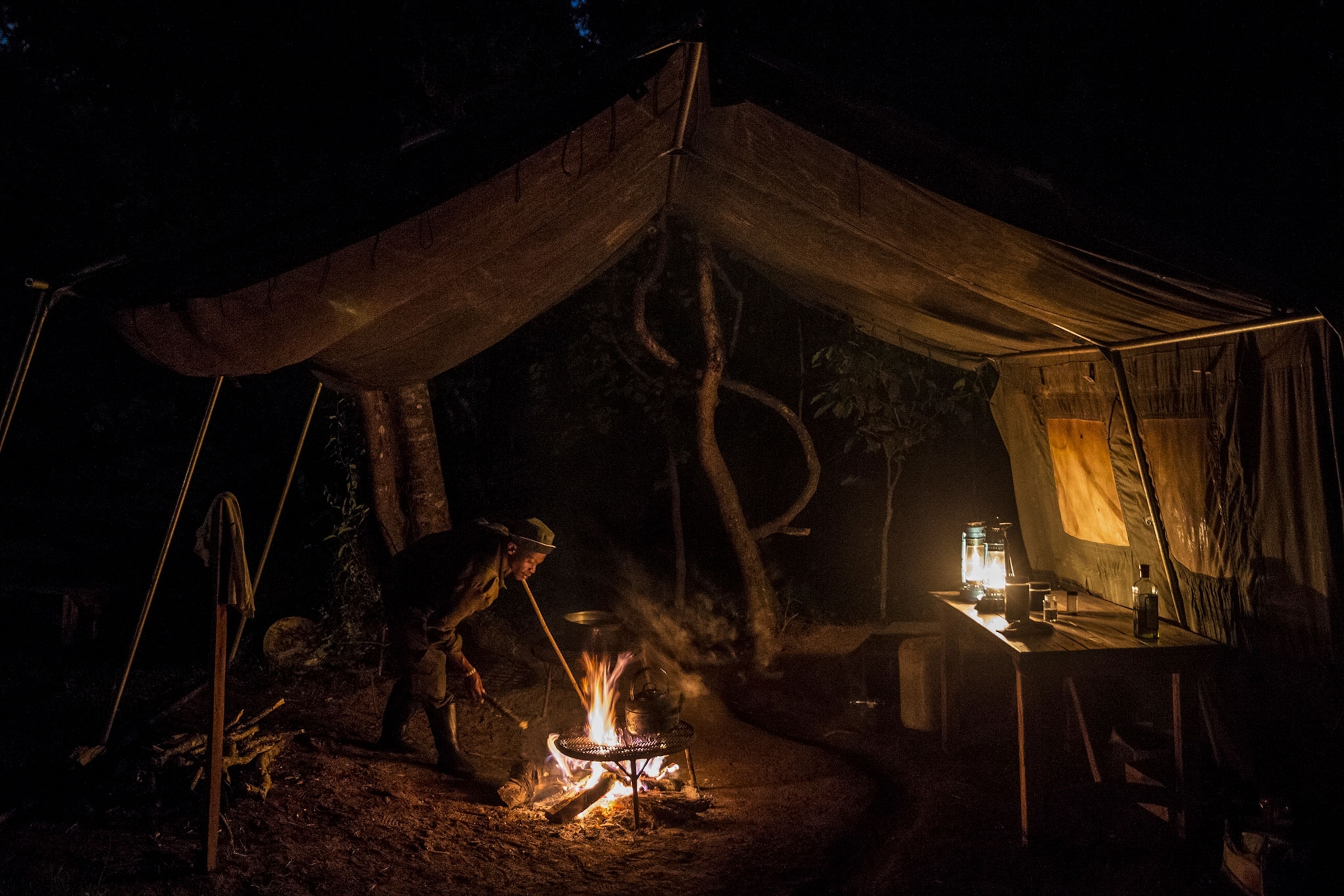
As John and I traversed the river, I realized we had different definitions of fly-fishing. John prefers to catch fish rather than spar with them and so sometimes baits his line. His method is effective, but for my more meditative aims, I decided to pursue a slower and far less fruitful approach. John could teach me about the river, about its history and ecology, but the subtleties of technical fly-fishing would be my own challenge.
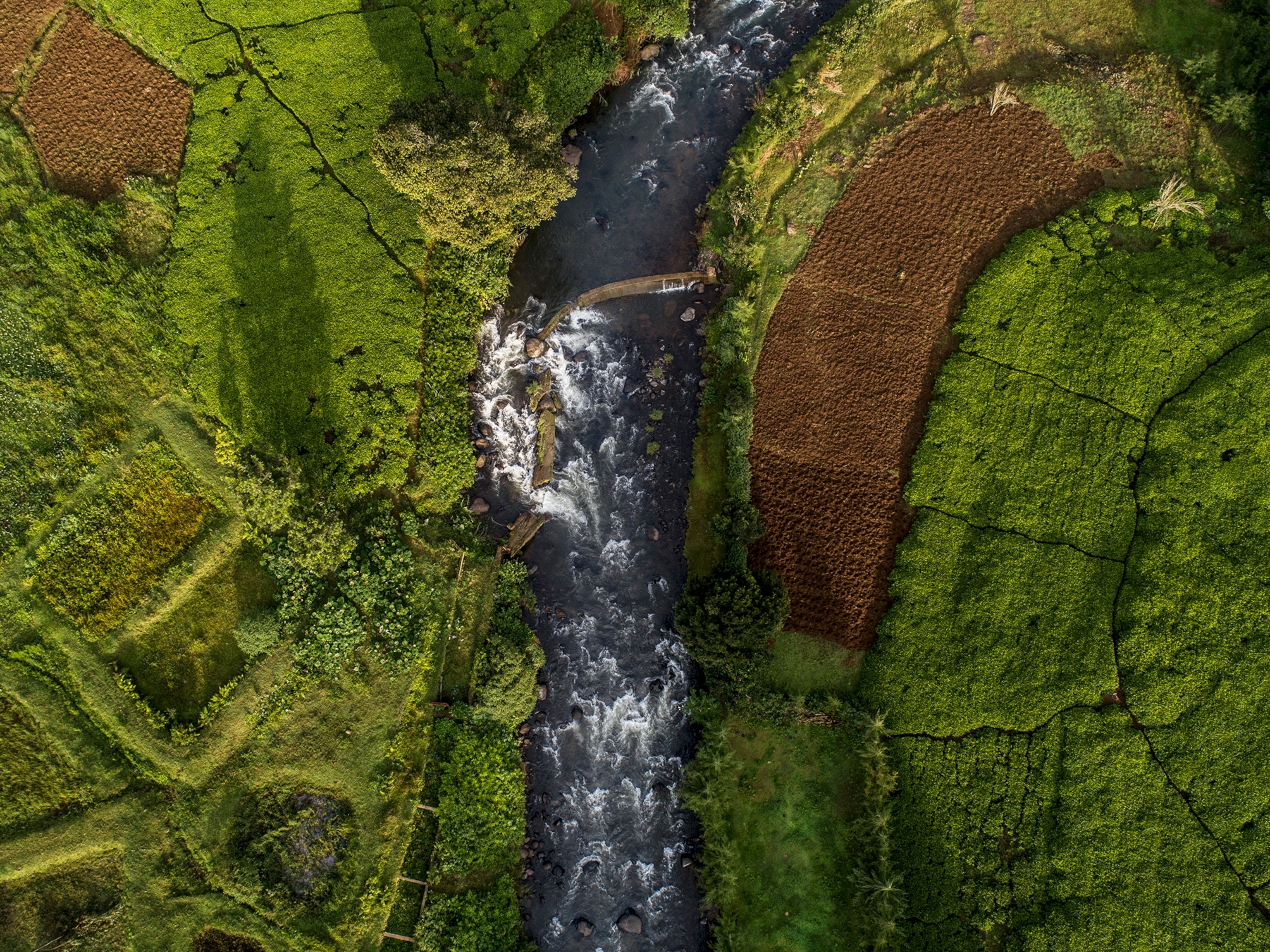
So began a period of quiet study, through books and websites, trial and error, in the graceful, patient art. I made nearly a dozen trips to the rivers of central Kenya before I felt even a nibble from the trout below. But despite my initial lack of success, my excursions created both ease and excitement within me. As I’d walk and cast, and sit and write, I understood that the hooking of fish was an excuse to explore and observe. To notice the sweet, enveloping scent of angel’s trumpet blooms as the sun begins to set behind the hills. To watch pairs of black African ducks surf the current as the midmorning sun chases out the mist. To once again consider things bigger and smaller than I am.
And as the fish began to take my flies, I came to know that the rivers had given me more than I’d asked. I’d arrived in search of peace and a pastime, a counterweight to the stresses in my life. But as I waded in the eddies, in a cathedral of mist and wood and leaves, I felt connected, as I did on the summer days of my childhood, when sand sharks and puffer fish made my heart beat with curiosity and wonder.
This story was updated to reflect how it appeared in the August 2019 issue of National Geographic magazine.
